High Temperature Measurement with Low Cost, VCSEL-Based, Interrogation System Using Femtosecond Bragg Gratings
Abstract
:1. Introduction
2. Principle of Working
2.1. FBG Sensor Network
2.2. Optical Interrogator
2.3. Control & Storage Unit
2.4. Bypassing Limitations of Optical Interrogator
3. Examination of the Concept
3.1. Calculation of Central Wavelength
3.2. Decreasing Error in the System
3.3. Experiment Results
4. System Enhancement
Optimization of the System
5. Discussion and Conclusions
Author Contributions
Funding
Institutional Review Board Statement
Informed Consent Statement
Data Availability Statement
Acknowledgments
Conflicts of Interest
Abbreviations
| ADC | Analog-to-digital converter |
| AI | Artificial intelligence |
| BBS | Broadband light source |
| CSU | Control & storage unit |
| DAC | Digital-to-analog converter |
| FBG | Fiber Bragg grating |
| GPIO | General-purpose input/output |
| HCG | High contrast grating |
| MCU | Microcontroller unit |
| ML | Machine learning |
| OPAMP | Operational amplifier |
| OSA | Optical spectrum analyzer |
| PD | Photodetector |
| SFBG | Sapphire fiber Bragg grating |
| SLED | Superluminescent diode |
| TEC | Thermoelectric cooler |
| TMM | Transfer matrix method |
| UART | Universal asynchronous receiver-transmitter |
| USB | Universal serial bus |
| VCSEL | Vertical cavity surface emitting laser |
References
- Schütze, A.; Helwig, N.; Schneider, T. Sensors 4.0—Smart sensors and measurement technology enable Industry 4.0. J. Sens. Sens. Syst. 2018, 7, 359–371. [Google Scholar] [CrossRef] [Green Version]
- Javaid, M.; Haleem, A.; Singh, R.P.; Rab, S.; Suman, R. Significance of sensors for industry 4.0: Roles, capabilities, and applications. Sens. Int. 2021, 2, 100110. [Google Scholar] [CrossRef]
- Oztemel, E.; Gursev, S. Literature review of Industry 4.0 and related technologies. J. Intell. Manuf. 2020, 31, 127–182. [Google Scholar] [CrossRef]
- Thoben, K.D.; Wiesner, S.; Wuest, T. “Industrie 4.0” and Smart Manufacturing—A Review of Research Issues and Application Examples. Int. J. Autom. Technol. 2017, 11, 4–16. [Google Scholar] [CrossRef] [Green Version]
- Georgilakis, P.S. Spotlight on Modern Transformer Design; Power Systems; Springer: London, UK, 2009; Volume 38. [Google Scholar] [CrossRef]
- Ba̧ba, S. Multiparameter reliability model for SiC power MOSFET subjected to repetitive thermomechanical load. Bull. Pol. Acad. Sci. Tech. Sci. 2021, 69, e137386. [Google Scholar] [CrossRef]
- Oh, K.Y.; Epureanu, B.I. Characterization and modeling of the thermal mechanics of lithium-ion battery cells. Appl. Energy 2016, 178, 633–646. [Google Scholar] [CrossRef] [Green Version]
- Oh, K.Y.; Siegel, J.B.; Secondo, L.; Kim, S.U.; Samad, N.A.; Qin, J.; Anderson, D.; Garikipati, K.; Knobloch, A.; Epureanu, B.I.; et al. Rate dependence of swelling in lithium-ion cells. J. Power Sources 2014, 267, 197–202. [Google Scholar] [CrossRef]
- Duan, J.; Tang, X.; Dai, H.; Yang, Y.; Wu, W.; Wei, X.; Huang, Y. Building Safe Lithium-Ion Batteries for Electric Vehicles: A Review. Electrochem. Energy Rev. 2020, 3, 1–42. [Google Scholar] [CrossRef] [Green Version]
- Raijmakers, L.H.; Danilov, D.L.; Eichel, R.A.; Notten, P.H. A review on various temperature-indication methods for Li-ion batteries. Appl. Energy 2019, 240, 918–945. [Google Scholar] [CrossRef]
- Hill, K.; Meltz, G. Fiber Bragg grating technology fundamentals and overview. J. Light. Technol. 1997, 15, 1263–1276. [Google Scholar] [CrossRef] [Green Version]
- Kersey, A.; Davis, M.; Patrick, H.; LeBlanc, M.; Koo, K.; Askins, C.; Putnam, M.; Friebele, E. Fiber grating sensors. J. Light. Technol. 1997, 15, 1442–1463. [Google Scholar] [CrossRef] [Green Version]
- Rao, Y.J.J. In-fibre Bragg grating sensors. Meas. Sci. Technol. 1997, 8, 355–375. [Google Scholar] [CrossRef]
- Othonos, A. Fiber Bragg Gratings. Rev. Sci. Instrum. 1997, 68, 4309. [Google Scholar] [CrossRef]
- Lee, B. Review of the present status of optical fiber sensors. Opt. Fiber Technol. 2003, 9, 57–79. [Google Scholar] [CrossRef]
- Chai, Q.; Luo, Y. Review on fiber-optic sensing in health monitoring of power grids. Opt. Eng. 2019, 58, 1. [Google Scholar] [CrossRef] [Green Version]
- Girard, S.; Morana, A.; Ladaci, A.; Robin, T.; Mescia, L.; Bonnefois, J.J.; Boutillier, M.; Mekki, J.; Paveau, A.; Cadier, B.; et al. Recent advances in radiation-hardened fiber-based technologies for space applications. J. Opt. 2018, 20, 093001. [Google Scholar] [CrossRef] [Green Version]
- Ecke, W.; Latka, I.; Willsch, R.; Reutlinger, A.; Graue, R. Fibre optic sensor network for spacecraft health monitoring. Meas. Sci. Technol. 2001, 12, 974–980. [Google Scholar] [CrossRef]
- Mihailov, S.J. Fiber Bragg Grating Sensors for Harsh Environments. Sensors 2012, 12, 1898–1918. [Google Scholar] [CrossRef]
- Schena, E.; Tosi, D.; Saccomandi, P.; Lewis, E.; Kim, T. Fiber Optic Sensors for Temperature Monitoring during Thermal Treatments: An Overview. Sensors 2016, 16, 1144. [Google Scholar] [CrossRef]
- Davis, K.M.; Miura, K.; Sugimoto, N.; Hirao, K. Writing waveguides in glass with a femtosecond laser. Opt. Lett. 1996, 21, 1729. [Google Scholar] [CrossRef]
- Martinez, A.; Dubov, M.; Khrushchev, I.; Bennion, I. Direct writing of fibre Bragg gratings by femtosecond laser. Electron. Lett. 2004, 40, 1170. [Google Scholar] [CrossRef]
- Sutapun, B. Pd-coated elastooptic fiber optic Bragg grating sensors for multiplexed hydrogen sensing. Sens. Actuators B Chem. 1999, 60, 27–34. [Google Scholar] [CrossRef]
- Yeo, T.; Sun, T.; Grattan, K.; Parry, D.; Lade, R.; Powell, B. Characterisation of a polymer-coated fibre Bragg grating sensor for relative humidity sensing. Sens. Actuators B Chem. 2005, 110, 148–156. [Google Scholar] [CrossRef]
- Zhang, Y.; Feng, D.; Liu, Z.; Guo, Z.; Dong, X.; Chiang, K.; Chu, B. High-sensitivity pressure sensor using a shielded polymer-coated fiber Bragg grating. IEEE Photonics Technol. Lett. 2001, 13, 618–619. [Google Scholar] [CrossRef]
- Sahota, J.K.; Gupta, N.; Dhawan, D. Fiber Bragg grating sensors for monitoring of physical parameters: A comprehensive review. Opt. Eng. 2020, 59, 1. [Google Scholar] [CrossRef]
- Kashyap, R. Fiber Bragg Gratings; Optics and Photonics; Academic Press: Burlington, VT, USA, 2009; ISBN 9780080919911. [Google Scholar]
- Lo Presti, D.; Massaroni, C.; D’Abbraccio, J.; Massari, L.; Caponero, M.; Longo, U.G.; Formica, D.; Oddo, C.M.; Schena, E. Wearable System Based on Flexible FBG for Respiratory and Cardiac Monitoring. IEEE Sens. J. 2019, 19, 7391–7398. [Google Scholar] [CrossRef]
- Cusano, A.; Cutolo, A.; Albert, J. Fiber Bragg Grating Sensors: Recent Advancements, Industrial Applications and Market Exploitation; Bentham Science Publishers: Sharjah, United Arab Emirates, 2012. [Google Scholar] [CrossRef] [Green Version]
- Lee, B.W.; Seo, M.S.; Oh, H.G.; Park, C.Y. High-Speed Wavelength Interrogator of Fiber Bragg Gratings for Capturing Impulsive Strain Waveforms. In Advanced Materials Research; Trans Tech Publications Ltd.: Baech, Switzerland, 2010; pp. 123–125. [Google Scholar] [CrossRef]
- Xu, M.G.; Geiger, H.; Dakin, J.P. Modeling and performance analysis of a fiber bragg grating interrogation system using an acousto-optic tunable filter. J. Light. Technol. 1996, 14, 391–396. [Google Scholar] [CrossRef]
- Johnson, G.; Todd, M.; Althouse, B.; Chang, C. Fiber Bragg grating interrogation and multiplexing with a 3/spl times/3 coupler and a scanning filter. J. Light. Technol. 2000, 18, 1101–1105. [Google Scholar] [CrossRef]
- Jeong, S.Y.; Choi, S.J.; Pan, J.K. An Implementation of FBG Interrogator with a Tunable Fabry-Perot Filter. In Advanced Photonics 2017 (IPR, NOMA, Sensors, Networks, SPPCom, PS); OSA: Washington, DC, USA, 2017. [Google Scholar] [CrossRef]
- Diaz, C.A.R.; Leal-Junior, A.G.; Avellar, L.; Antunes, P.F.C.; Pontes, M.J.; Marques, C.A.; Frizera, A.; Ribeiro, M.R.N. Perrogator: A Portable Energy-Efficient Interrogator for Dynamic Monitoring of Wavelength-Based Sensors in Wearable Applications. Sensors 2019, 19, 2962. [Google Scholar] [CrossRef] [Green Version]
- Ibrahim, S.K.; O’Dowd, J.A.; McCue, R.; Honniball, A.; Farnan, M. Design Challenges of a High Speed Tunable Laser Interrogator for Future Spacecraft Health Monitoring. In CLEO: 2015; OSA: Washington, DC, USA, 2015. [Google Scholar] [CrossRef]
- Ball, G.; Morey, W.; Cheo, P. Fiber laser source/analyzer for Bragg grating sensor array interrogation. J. Light. Technol. 1994, 12, 700–703. [Google Scholar] [CrossRef]
- Yun, S.H.; Richardson, D.J.; Kim, B.Y. Interrogation of fiber grating sensor arrays with a wavelength-swept fiber laser. Opt. Lett. 1998, 23, 843–845. [Google Scholar] [CrossRef] [PubMed]
- Sano, Y.; Yoshino, T. Fast optical wavelength interrogator employing arrayed waveguide grating for distributed fiber bragg grating sensors. J. Light. Technol. 2003, 21, 132. [Google Scholar] [CrossRef]
- Dai, Y.; Liu, Y.; Leng, J.; Deng, G.; Asundi, A. A novel time-division multiplexing fiber Bragg grating sensor interrogator for structural health monitoring. Opt. Lasers Eng. 2009, 47, 1028–1033. [Google Scholar] [CrossRef]
- Díaz, C.A.; Marques, C.A.; Domingues, M.F.F.; Ribeiro, M.R.; Frizera-Neto, A.; Pontes, M.J.; André, P.S.; Antunes, P.F. A cost-effective edge-filter based FBG interrogator using catastrophic fuse effect micro-cavity interferometers. Measurement 2018, 124, 486–493. [Google Scholar] [CrossRef]
- Lloyd, G.; Everall, L.; Sugden, K.; Bennion, I. Resonant Cavity Time-Division-Multiplexed Fiber Bragg Grating Sensor Interrogator. IEEE Photonics Technol. Lett. 2004, 16, 2323–2325. [Google Scholar] [CrossRef]
- Marin, Y.E.; Nannipieri, T.; Oton, C.J.; Pasquale, F.D. Current Status and Future Trends of Photonic-Integrated FBG Interrogators. J. Light. Technol. 2018, 36, 946–953. [Google Scholar] [CrossRef]
- Marin, Y.; Nannipieri, T.; Oton, C.J.; Di Pasquale, F. Fiber Bragg grating sensor interrogators on chip: Challenges and opportunities. In Proceedings of the 2017 25th Optical Fiber Sensors Conference (OFS), Jeju, Republic of Korea, 24–28 April 2017; p. 103230D. [Google Scholar] [CrossRef]
- Rao, Y.; Yang, W.; Chase, C.; Huang, M.C.Y.; Worland, D.D.P.; Khaleghi, S.; Chitgarha, M.R.; Ziyadi, M.; Willner, A.E.; Chang-Hasnain, C.J. Long-Wavelength VCSEL Using High-Contrast Grating. IEEE J. Sel. Top. Quantum Electron. 2013, 19, 1701311. [Google Scholar] [CrossRef]
- Mishra, V.; Singh, N.; Tiwari, U.; Kapur, P. Fiber grating sensors in medicine: Current and emerging applications. Sens. Actuators A Phys. 2011, 167, 279–290. [Google Scholar] [CrossRef]
- Taffoni, F.; Formica, D.; Saccomandi, P.; Pino, G.; Schena, E. Optical Fiber-Based MR-Compatible Sensors for Medical Applications: An Overview. Sensors 2013, 13, 14105–14120. [Google Scholar] [CrossRef]
- Canning, J. Fibre gratings and devices for sensors and lasers. Laser Photonics Rev. 2008, 2, 275–289. [Google Scholar] [CrossRef]
- Yariv, A. Coupled-Mode theory for guided-wave optics. IEEE J. Quantum Electron. 1973, 9, 919–933. [Google Scholar] [CrossRef] [Green Version]
- Morey, W.W.; Meltz, G.; Glenn, W.H. Fiber Optic Bragg Grating Sensors. In Fiber Optic and Laser Sensors VII; SPIE: Bellingham, WA, USA, 1990; Volume 1169, pp. 98–107. [Google Scholar] [CrossRef]
- Matsuoka, J.; Kitamura, N.; Fujinaga, S.; Kitaoka, T.; Yamashita, H. Temperature dependence of refractive index of SiO2 glass. J. Non-Cryst. Solids 1991, 135, 86–89. [Google Scholar] [CrossRef]
- Flockhart, G.M.H.; Maier, R.R.J.; Barton, J.S.; MacPherson, W.N.; Jones, J.D.C.; Chisholm, K.E.; Zhang, L.; Bennion, I.; Read, I.; Foote, P.D. Quadratic behavior of fiber Bragg grating temperature coefficients. Appl. Opt. 2004, 43, 2744. [Google Scholar] [CrossRef] [PubMed]
- Mahakud, R.; Kumar, J.; Prakash, O.; Dixit, S.K. Study of the nonuniform behavior of temperature sensitivity in bare and embedded fiber Bragg gratings: Experimental results and analysis. Appl. Opt. 2013, 52, 7570. [Google Scholar] [CrossRef]
- Ma, S.; Xu, Y.; Pang, Y.; Zhao, X.; Li, Y.; Qin, Z.; Liu, Z.; Lu, P.; Bao, X. Optical Fiber Sensors for High-Temperature Monitoring: A Review. Sensors 2022, 22, 5722. [Google Scholar] [CrossRef]
- Laffont, G.; Cotillard, R.; Ferdinand, P. Multiplexed regenerated fiber Bragg gratings for high-temperature measurement. Meas. Sci. Technol. 2013, 24, 094010. [Google Scholar] [CrossRef]
- Roths, J.; Seydel, C.G.; Heinrich, A.; Bosselmann, T.; Dutz, F.; Lindner, M.; Koch, A.W. Multipoint high temperature sensing with regenerated fiber Bragg gratings. In Fiber Optic Sensors and Applications XV; Du, H.H., Mendez, A., Baldwin, C.S., Eds.; SPIE: Bellingham, WA, USA, 2018; Volume 10654, pp. 68–78. [Google Scholar] [CrossRef]
- Pakmehr, M.; Behbahani, A.R.; Moslehi, B.; Costa, J.; Black, R.J. A Review of Fiber Optic Technology for Turbine Engine Instrumentation Channel: Control, PHM, and Test Cell Applications. In Proceedings of the 50th AIAA/ASME/SAE/ASEE Joint Propulsion Conference, Cleveland, OH, USA, 28–30 July 2014; American Institute of Aeronautics and Astronautics: Reston, VA, USA, 2014; pp. 1–18. [Google Scholar] [CrossRef]
- Fajkus, M.; Kovar, P.; Skapa, J.; Nedoma, J.; Martinek, R.; Vasinek, V. Design of Fiber Bragg Grating Sensor Networks. IEEE Trans. Instrum. Meas. 2022, 71, 1–11. [Google Scholar] [CrossRef]
- Erdogan, T. Fiber grating spectra. J. Light. Technol. 1997, 15, 1277–1294. [Google Scholar] [CrossRef] [Green Version]
- Askins, C.G.; Putnam, M.A.; Friebele, E.J. Instrumentation for interrogating many-element fiber Bragg grating arrays. In Smart Structures and Materials 1995: Smart Sensing, Processing, and Instrumentation; Spillman, W.B., Jr., Ed.; International Society for Optics and Photonics, SPIE: Bellingham, WA, USA, 1995; Volume 2444, pp. 257–266. [Google Scholar] [CrossRef]
- Negri, L.; Nied, A.; Kalinowski, H.; Paterno, A. Benchmark for Peak Detection Algorithms in Fiber Bragg Grating Interrogation and a New Neural Network for its Performance Improvement. Sensors 2011, 11, 3466–3482. [Google Scholar] [CrossRef]
- Tosi, D. Review and analysis of peak tracking techniques for fiber bragg grating sensors. Sensors 2017, 17, 2368. [Google Scholar] [CrossRef]
- Liao, C.R.; Wang, D.N. Review of femtosecond laser fabricated fiber Bragg gratings for high temperature sensing. Photonic Sens. 2013, 3, 97–101. [Google Scholar] [CrossRef] [Green Version]
- Habisreuther, T.; Elsmann, T.; Pan, Z.; Graf, A.; Willsch, R.; Schmidt, M.A. Sapphire fiber Bragg gratings for high temperature and dynamic temperature diagnostics. Appl. Therm. Eng. 2015, 91, 860–865. [Google Scholar] [CrossRef]
- Elsmann, T.; Lorenz, A.; Yazd, N.S.; Habisreuther, T.; Dellith, J.; Schwuchow, A.; Bierlich, J.; Schuster, K.; Rothhardt, M.; Kido, L.; et al. High temperature sensing with fiber Bragg gratings in sapphire-derived all-glass optical fibers. Opt. Express 2014, 22, 26825. [Google Scholar] [CrossRef] [PubMed]
- Busch, M.; Ecke, W.; Latka, I.; Fischer, D.; Willsch, R.; Bartelt, H. Inscription and characterization of Bragg gratings in single-crystal sapphire optical fibres for high-temperature sensor applications. Meas. Sci. Technol. 2009, 20, 115301. [Google Scholar] [CrossRef]
- Elsmann, T.; Habisreuther, T.; Graf, A.; Rothhardt, M.; Bartelt, H. Inscription of first-order sapphire Bragg gratings using 400 nm femtosecond laser radiation. Opt. Express 2013, 21, 4591. [Google Scholar] [CrossRef]
- Manie, Y.C.; Peng, P.C.; Shiu, R.K.; Hsu, Y.T.; Chen, Y.Y.; Shao, G.M.; Chiu, J. Enhancement of the Multiplexing Capacity and Measurement Accuracy of FBG Sensor System Using IWDM Technique and Deep Learning Algorithm. J. Light. Technol. 2020, 38, 1589–1603. [Google Scholar] [CrossRef]
- Yeh, C.H.; Zhuang, Y.H.; Tsai, N.; Chow, C.W. Capacity and capability enhancements of FBG sensor system by utilizing intensity and WDM detection technique. Smart Mater. Struct. 2017, 26, 035026. [Google Scholar] [CrossRef]
- Peng, P.C.; Lin, J.H.; Tseng, H.Y.; Chi, S. Intensity and Wavelength-Division Multiplexing FBG Sensor System Using a Tunable Multiport Fiber Ring Laser. IEEE Photonics Technol. Lett. 2004, 16, 230–232. [Google Scholar] [CrossRef]
- Zhang, L.; Liu, Y.; Williams, J.A.; Bennion, I. Enhanced multiplexing capacity of FBGs strain sensing using intensity and wavelength dual-coding technique. IEE Colloq. 1999, 11, 67–70. [Google Scholar] [CrossRef]
- Guo, Q.; Zhang, Z.D.; Zheng, Z.M.; Pan, X.P.; Chen, C.; Tian, Z.N.; Chen, Q.D.; Yu, Y.S.; Sun, H.B. Parallel-Integrated Sapphire Fiber Bragg Gratings Probe Sensor for High Temperature Sensing. IEEE Sens. J. 2022, 22, 5703–5708. [Google Scholar] [CrossRef]
- Yang, S.; Homa, D.; Heyl, H.; Theis, L.; Beach, J.; Dudding, B.; Acord, G.; Taylor, D.; Pickrell, G.; Wang, A. Application of sapphire-fiber-bragg-grating-based multi-point temperature sensor in boilers at a commercial power plant. Sensors 2019, 19, 3211. [Google Scholar] [CrossRef] [PubMed] [Green Version]
- He, J.; Xu, X.; Du, B.; Xu, B.; Chen, R.; Wang, Y.; Liao, C.; Guo, J.; Wang, Y.; He, J. Stabilized Ultra-High-Temperature Sensors Based on Inert Gas-Sealed Sapphire Fiber Bragg Gratings. ACS Appl. Mater. Interfaces 2022, 14, 12359–12366. [Google Scholar] [CrossRef] [PubMed]
- Xu, X.; He, J.; Liao, C.; Yang, K.; Guo, K.; Li, C.; Zhang, Y.; Ouyang, Z.; Wang, Y. Sapphire fiber Bragg gratings inscribed with a femtosecond laser line-by-line scanning technique. Opt. Lett. 2018, 43, 4562. [Google Scholar] [CrossRef] [PubMed] [Green Version]
- Xu, X.; He, J.; He, J.; Xu, B.; Chen, R.; Wang, Y.; Yang, Y.; Wang, Y. Efficient point-by-point Bragg grating inscription in sapphire fiber using femtosecond laser filaments. Opt. Lett. 2021, 46, 2742. [Google Scholar] [CrossRef]
- Wang, Y.; Gong, J.; Dong, B.; Wang, D.Y.; Shillig, T.J.; Wang, A. A Large Serial Time-Division Multiplexed Fiber Bragg Grating Sensor Network. J. Light. Technol. 2012, 30, 2751–2756. [Google Scholar] [CrossRef]
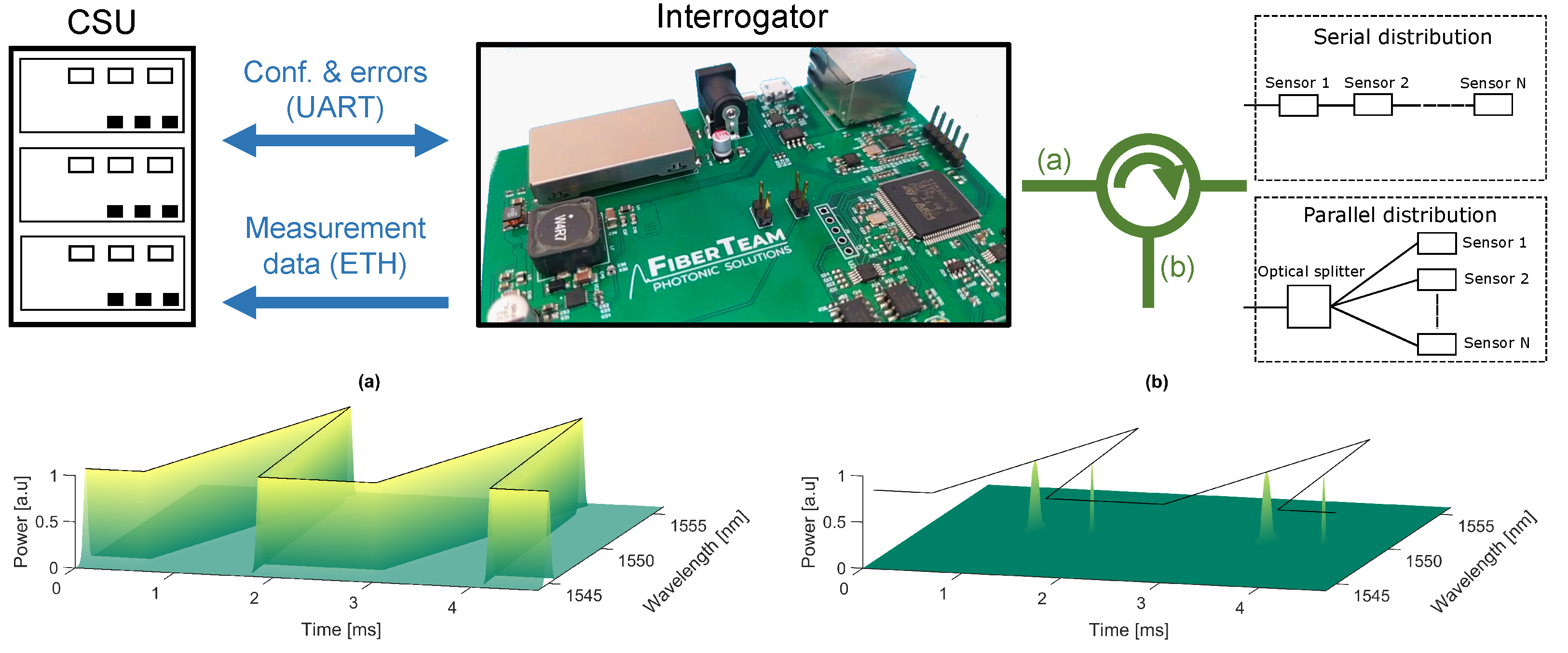
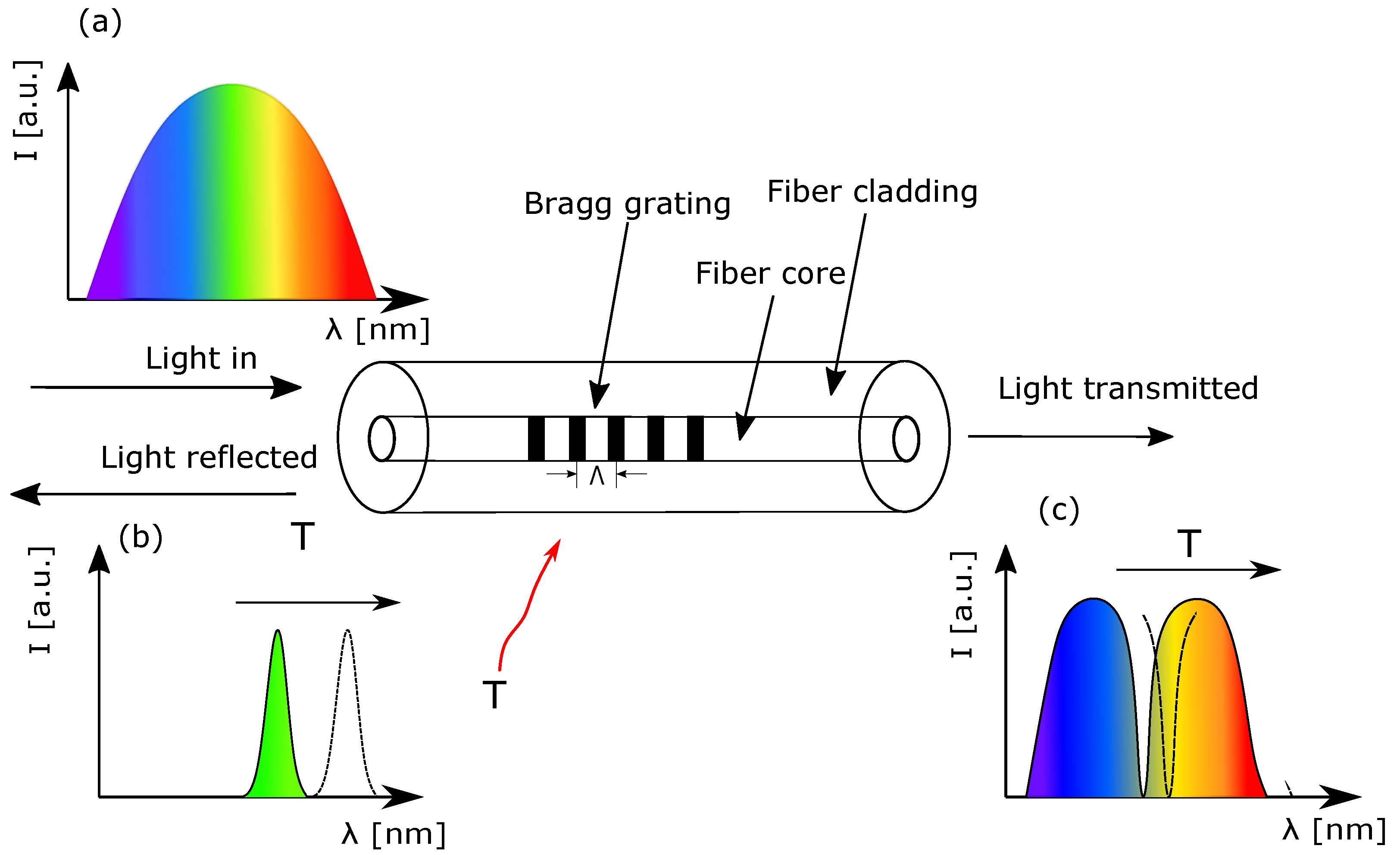
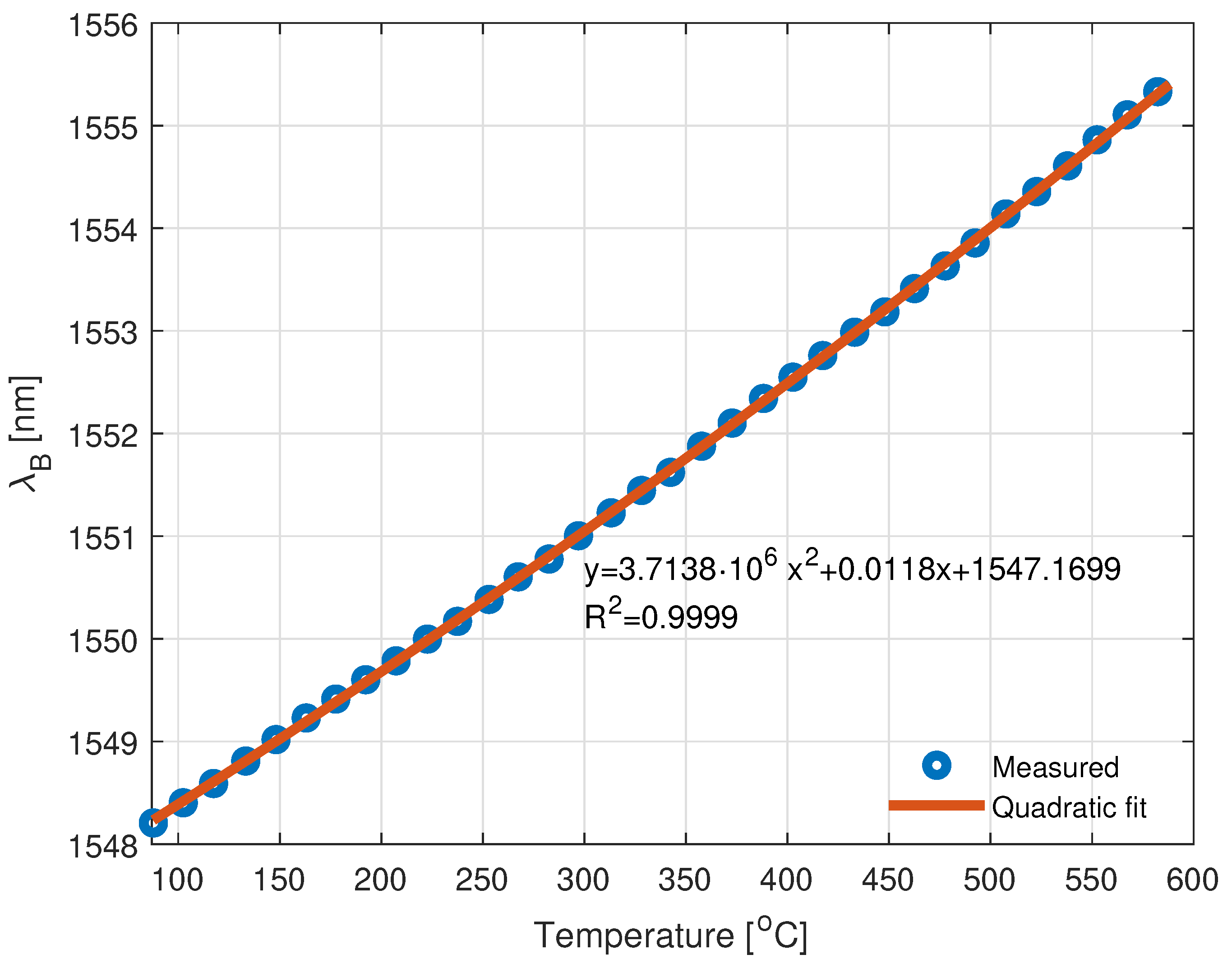
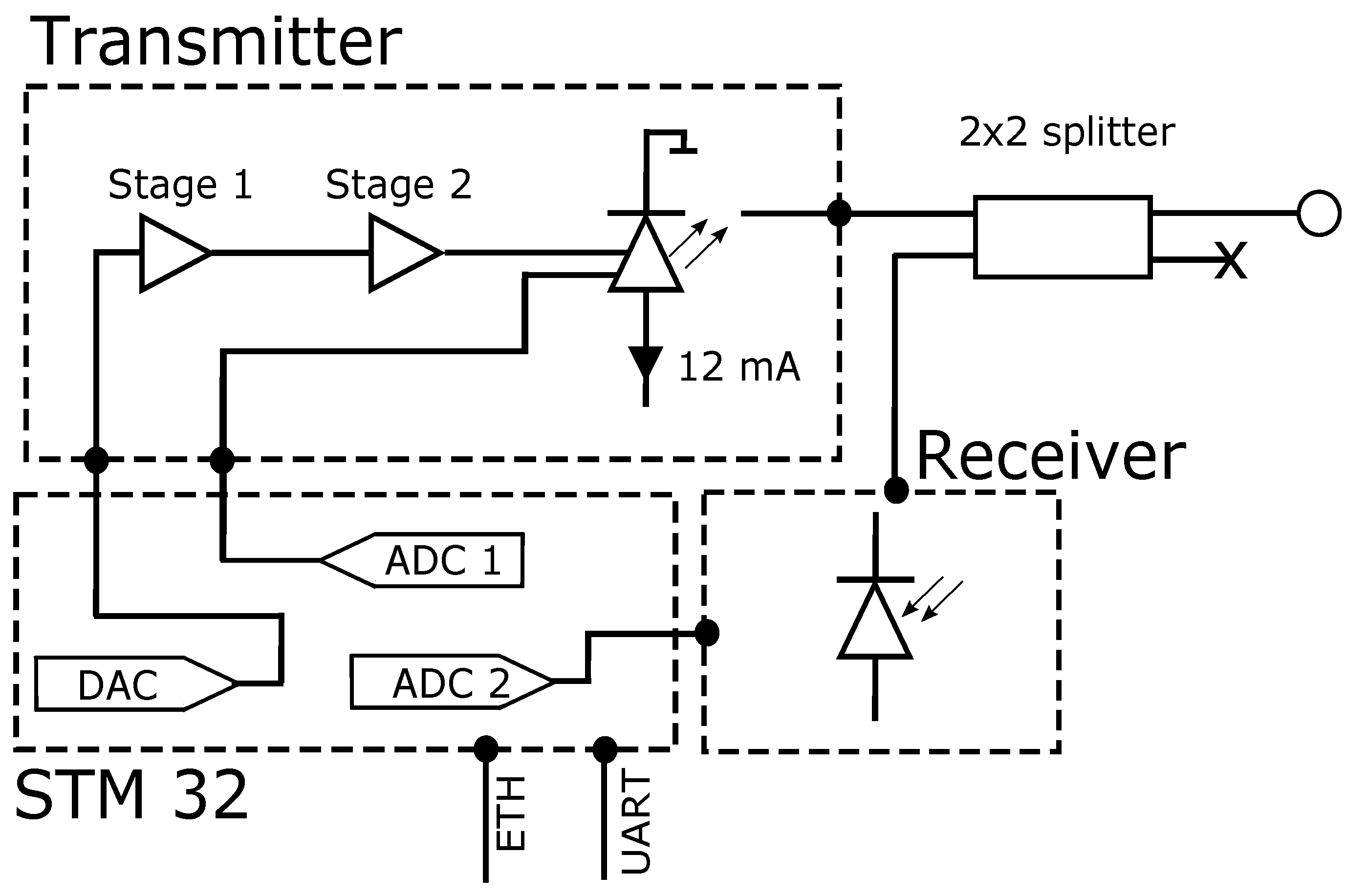
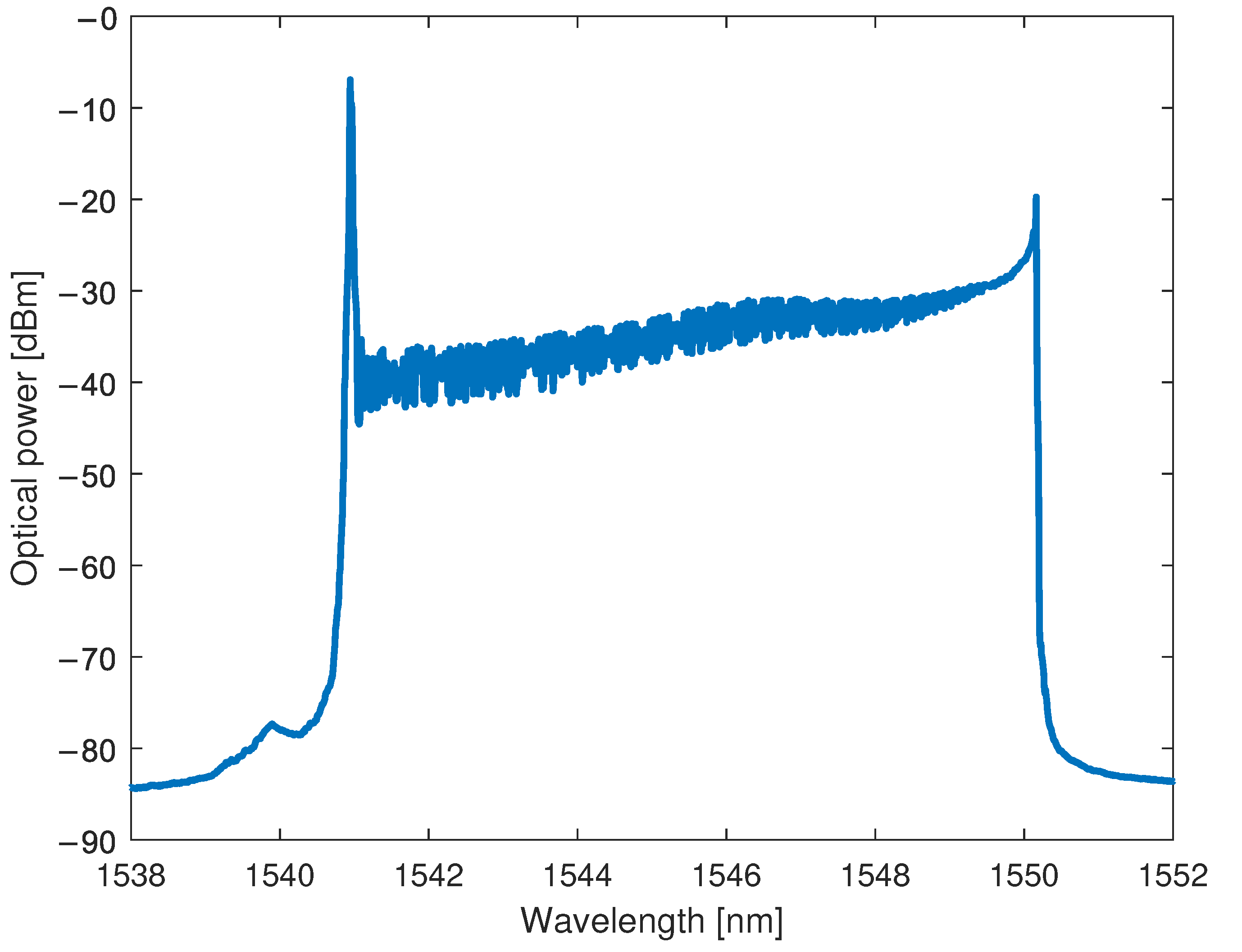


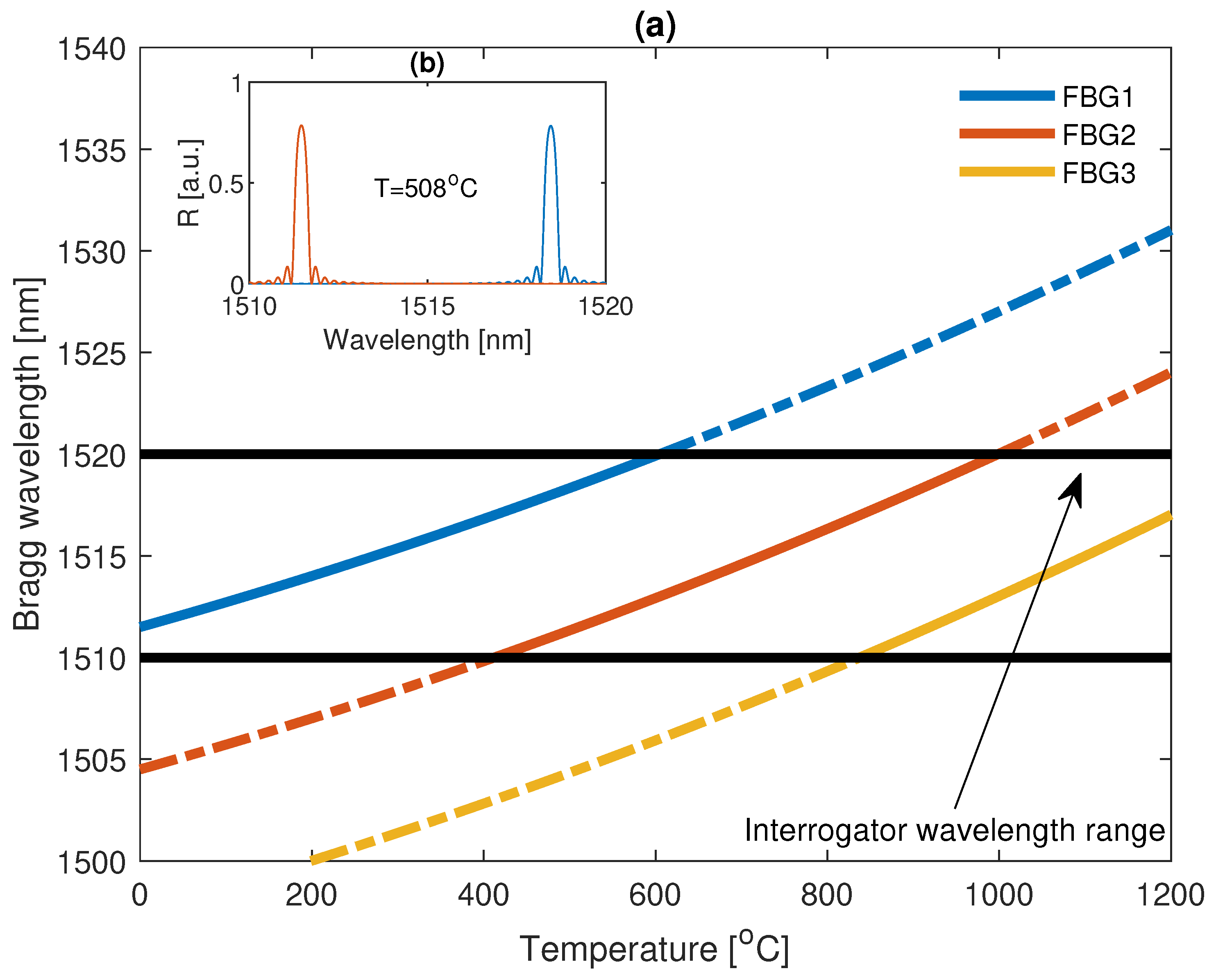
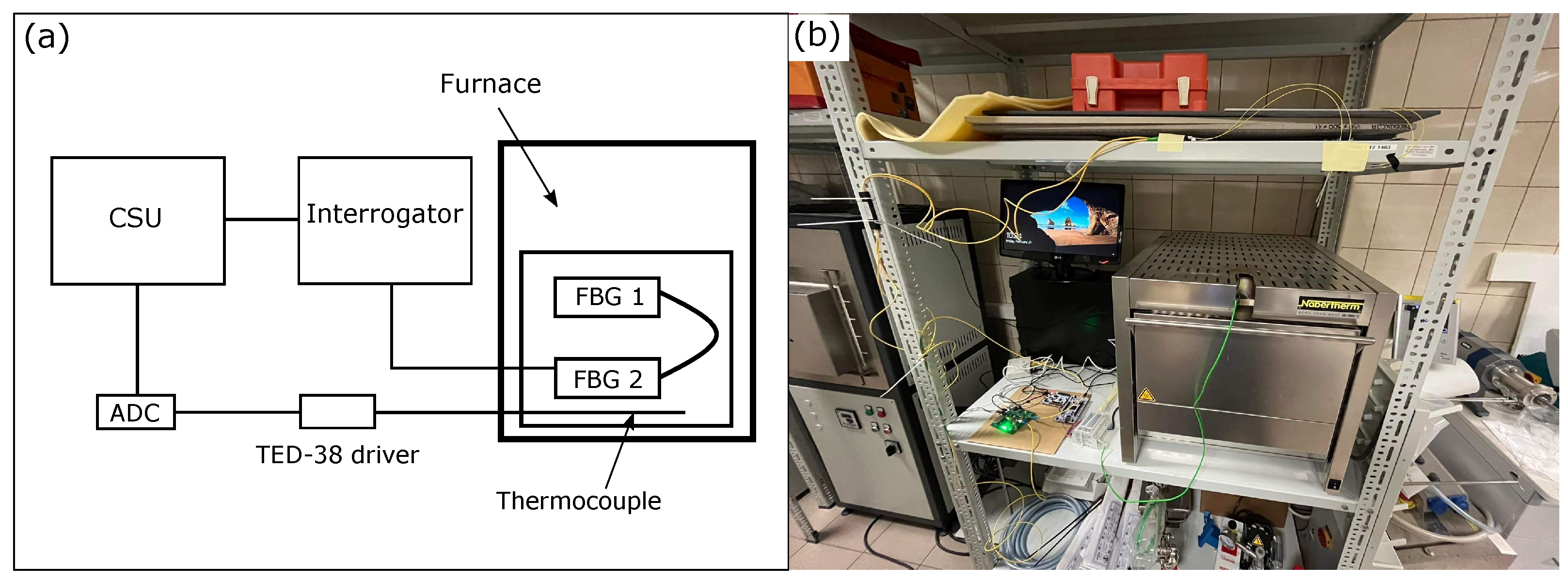
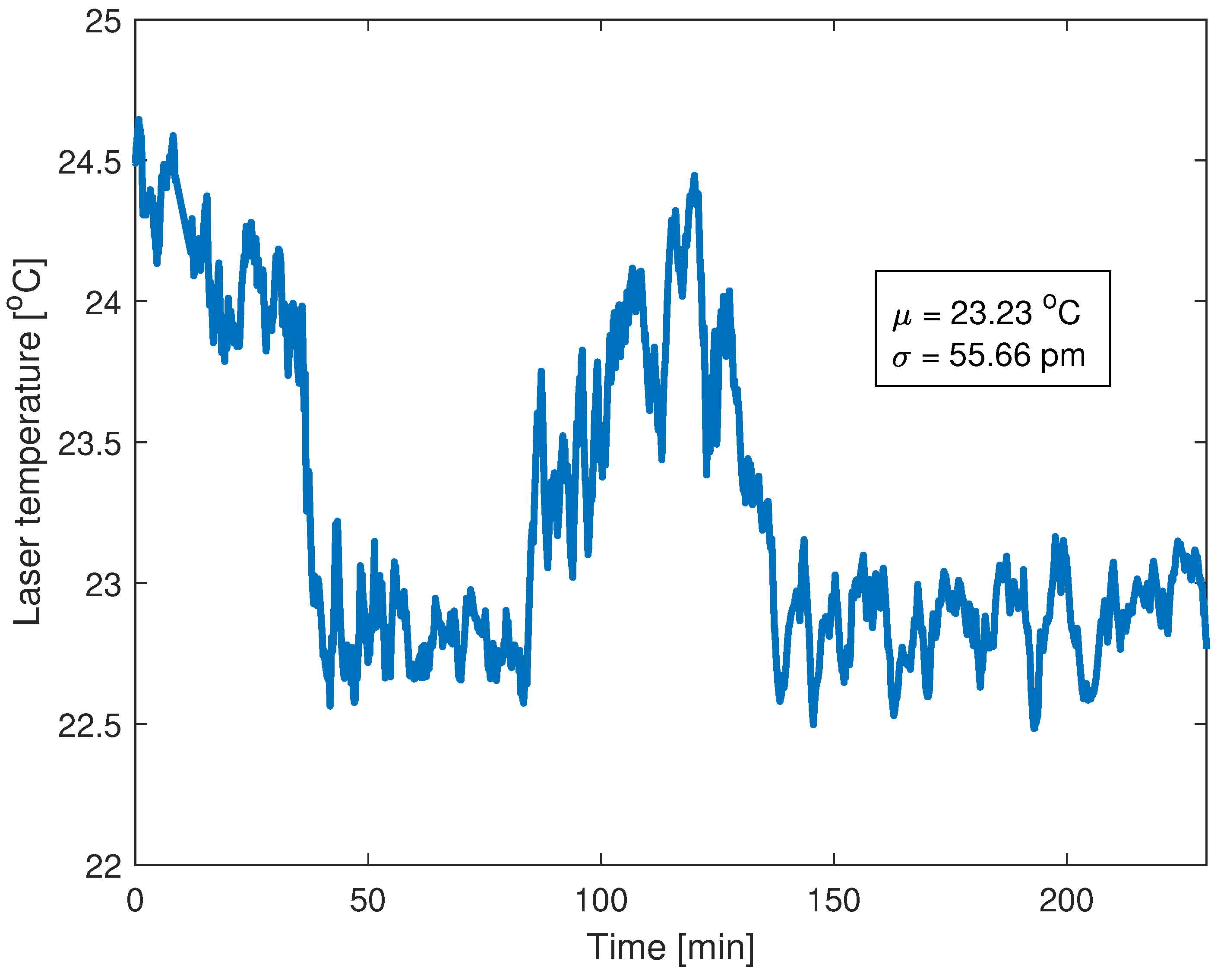
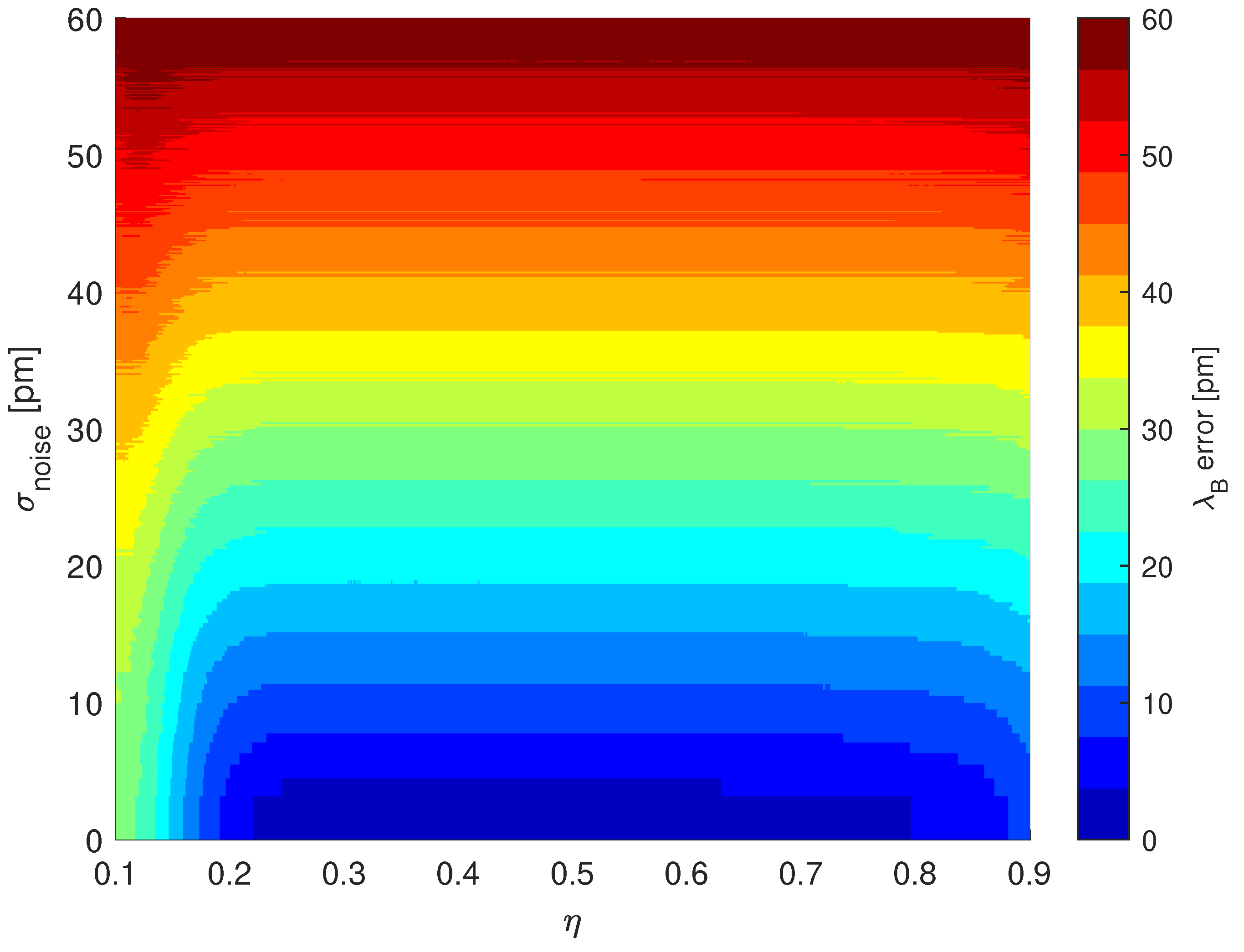

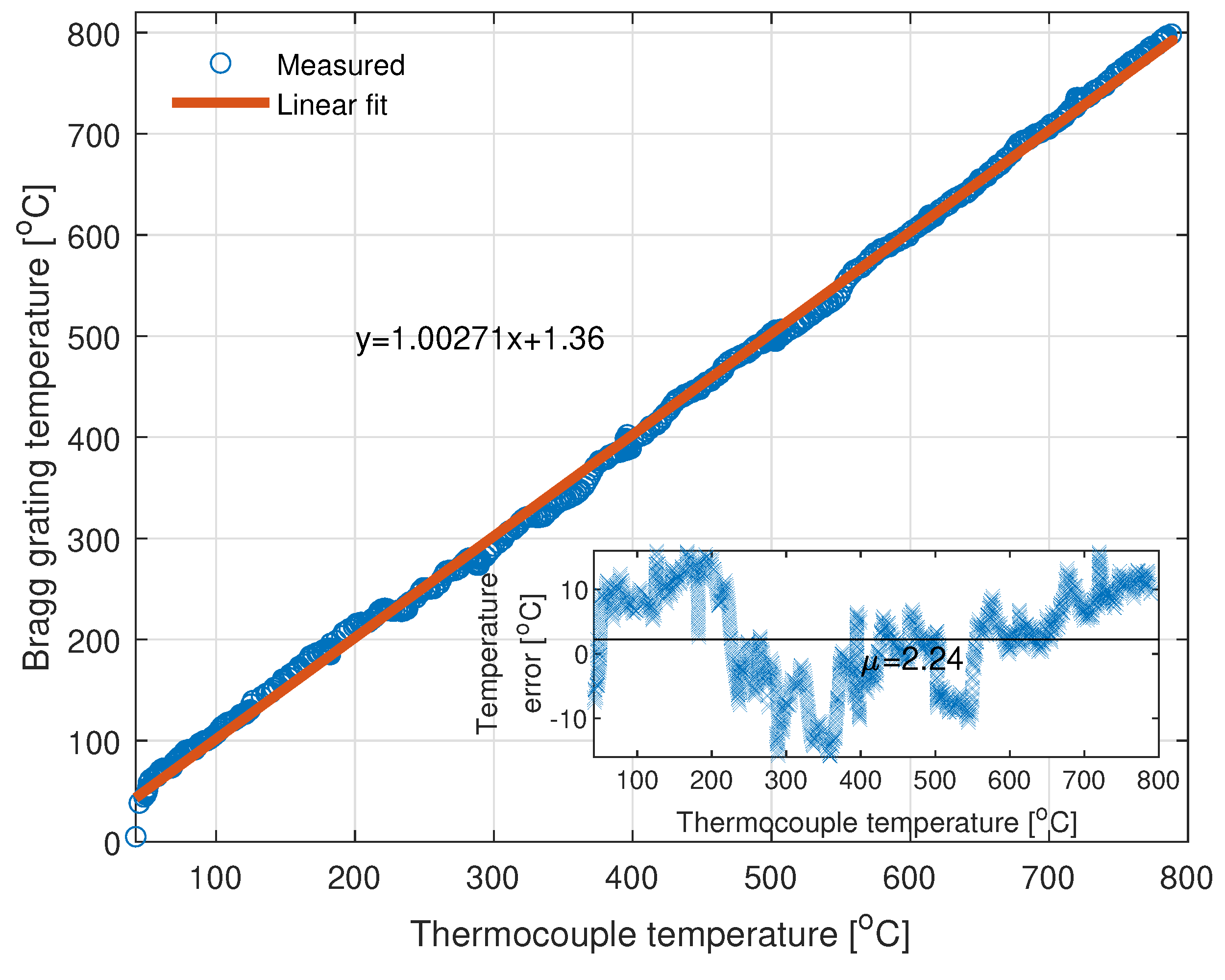

| Grating | @ °C [nm] | |
|---|---|---|
| FBG 1 | 70 | |
| FBG 2 | 60 |
| Parameter Name | Value |
|---|---|
| Interrogation speed | |
| Wavelength range | |
| Wavelength resolution | |
| Communication | Ethernet & UART |
| Average power consumption | |
| Suppply voltage | 9–18 V |
| Weight | ≈200 g |
| Price | <2000 € |
Publisher’s Note: MDPI stays neutral with regard to jurisdictional claims in published maps and institutional affiliations. |
© 2022 by the authors. Licensee MDPI, Basel, Switzerland. This article is an open access article distributed under the terms and conditions of the Creative Commons Attribution (CC BY) license (https://creativecommons.org/licenses/by/4.0/).
Share and Cite
Markowski, K.; Bojarczuk, J.; Araszkiewicz, P.; Ciftci, J.; Ignaciuk, A.; Gąska, M. High Temperature Measurement with Low Cost, VCSEL-Based, Interrogation System Using Femtosecond Bragg Gratings. Sensors 2022, 22, 9768. https://doi.org/10.3390/s22249768
Markowski K, Bojarczuk J, Araszkiewicz P, Ciftci J, Ignaciuk A, Gąska M. High Temperature Measurement with Low Cost, VCSEL-Based, Interrogation System Using Femtosecond Bragg Gratings. Sensors. 2022; 22(24):9768. https://doi.org/10.3390/s22249768
Chicago/Turabian StyleMarkowski, Konrad, Juliusz Bojarczuk, Piotr Araszkiewicz, Jakub Ciftci, Adam Ignaciuk, and Michał Gąska. 2022. "High Temperature Measurement with Low Cost, VCSEL-Based, Interrogation System Using Femtosecond Bragg Gratings" Sensors 22, no. 24: 9768. https://doi.org/10.3390/s22249768
APA StyleMarkowski, K., Bojarczuk, J., Araszkiewicz, P., Ciftci, J., Ignaciuk, A., & Gąska, M. (2022). High Temperature Measurement with Low Cost, VCSEL-Based, Interrogation System Using Femtosecond Bragg Gratings. Sensors, 22(24), 9768. https://doi.org/10.3390/s22249768






